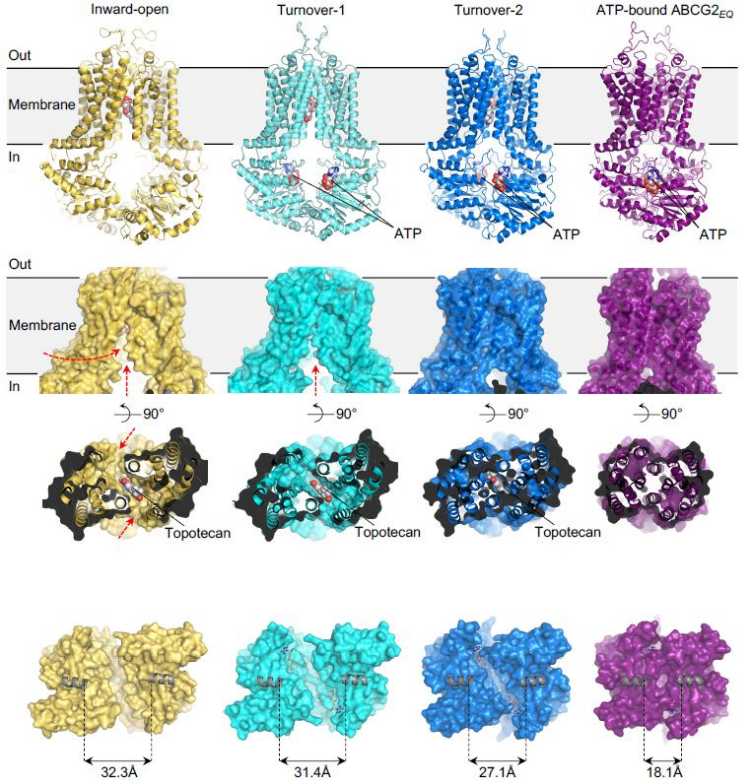Structures of ABCG2 under turnover conditions reveal a key step in the drug transport mechanism
A recent “Nature Communications” paper by the Locher group (IMBB, ETH) in collaboration with the Stahlberg group (University of Basel) reports cryoEM structures of ABCG2 under turnover condition, which reveal key conformational changes that are essential for substrate recognition and translocation and suggest how ABCG2 distinguish substrates from inhibitors.

ABCG2, also known as breast cancer resistance protein (BCRP), is an ABC transporter of broad substrate specificity and expressed in various tissues and tissue barriers. Its activity not only protects tissues against xenobiotics but also affects the pharmacokinetics of pharmaceuticals and limits the delivery of therapeutics into tumour cells. Thus, ABCG2 contributes to multidrug resistance in cancer, a major threat to human health. To developing specific inhibitors of ABCG2 to counteract its activity in protecting tumor cells from anti-cancer drugs, a detailed understanding of the mechanism of ABCG2 is required.
Researchers at ETH and University of Basel reported novel turnover states structures of ABCG2 by cryoEM method. Two distinct conformational states of ABCG2 were identified, in which both the transport substrates and ATP are bound. Whereas the state turnover-1 features more widely separated NBDs and an accessible substrate cavity between the TMDs, turnover-2 features semi-closed NBDs and an almost fully occluded substrate cavity. Substrate size appears to control which turnover state is mainly populated. While only turnover-2 state was found in E1S containing ABCG2 turnover sample, both turnover-1 and turnover-2 state were found in topotecan turnover sample. The transition from turnover-1 to turnover-2 is the likely bottleneck or rate-limiting step of the reaction cycle, where the discrimination of substrates and inhibitors occurs.
The study provides key insight into the transport cycle of ABCG2 and help understand how small-molecular compounds act as substrates or inhibitors. It may also have predictive value for understanding the mechanisms of other ABC transporters, in particular of the G-subfamily.
Link to the paper in external page "Nature communications".